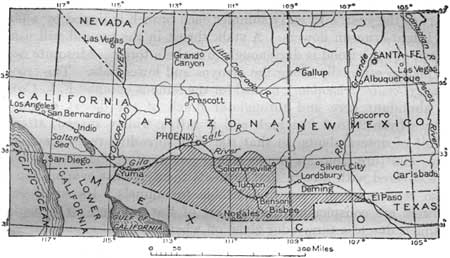User:JWB
Appearance
American expansion and division period
Texas Annexation
Wilmot Proviso

Mexican-American War
Treaty of Guadalupe Hidalgo
Mexican Cession
U.S. provisional government of New Mexico Territorial evolution of New Mexico

Constitutional Convention (California)

Compromise of 1850 Gadsden Purchase

Other geography



Language
Comparative linguistics
Linguistic typology Eurasiatic languages Borean languages
Writing systems
Radical (Chinese character)
South_Arabian_alphabet#Sign_inventory
History of the Arabic alphabet
East Asia
Standard Chinese Varieties of Chinese Mandarin Chinese
Mandarin dialects
Xiang Chinese Ported more detailed dialect map from Chinese Wikipedia
Yue Chinese
Tuhua
Anthropology

Multiregional origin of modern humans Wallace Line Wallacea
Astronomy
Late Heavy Bombardment Nice model
Mathematics

Nuclear
Arms control
List of states with nuclear weapons
Nuclear-Weapon-Free Zone



Reactor technology
Types
Integral Fast Reactor
UHTREX
Components
Nuclear reactor coolant Neutron moderator
Fission products
Fission product
Fission products (by element)
Fission product yield
Fluoride volatility
| Nuclide | t1⁄2
|
Yield | Q[a 1] | βγ
|
|---|---|---|---|---|
| ( Ma )
|
(%)[a 2] | ( keV )
|
||
| 99Tc | 0.211 | 6.1385 | 294 | β |
126Sn
|
0.230 | 0.1084 | 4050[a 3] | βγ |
| 79Se | 0.327 | 0.0447 | 151 | β |
135Cs
|
1.33 | 6.9110[a 4] | 269 | β |
93Zr
|
1.53 | 5.4575 | 91 | βγ |
107Pd
|
6.5 | 1.2499 | 33 | β |
| 129I | 15.7 | 0.8410 | 194 | βγ |
t½ )
(year |
Yield (%) |
keV )
|
βγ
| |
|---|---|---|---|---|
155Eu
|
4.76 | 0.0803 | 252 | βγ |
| 85Kr | 10.76 | 0.2180 | 687 | βγ |
113mCd
|
14.1 | 0.0008 | 316 | β |
| 90Sr | 28.9 | 4.505 | 2826 | β |
| 137Cs | 30.23 | 6.337 | 1176 | βγ |
121mSn
|
43.9 | 0.00005 | 390 | βγ |
151Sm
|
88.8 | 0.5314 | 77 | β |
| Actinides[1] by decay chain | Half-life range (a) |
|||||||
|---|---|---|---|---|---|---|---|---|
4n
|
4n + 1
|
4n + 2
|
4n + 3
|
4.5–7% | 0.04–1.25% | <0.001% | ||
228 Ra№
|
4–6 a
|
155 Euþ
|
||||||
244 Cmƒ
|
241Puƒ | 250 Cf
|
227 Ac№
|
10–29 a
|
90Sr | 85Kr | 113m Cdþ
| |
| 232Uƒ | 238Puƒ | 243 Cmƒ
|
29–97 a
|
137 Cs
|
151 Smþ
|
121m Sn
| ||
248Bk[3]
|
249 Cfƒ
|
242m Amƒ
|
141–351 a |
No fission products have a half-life | ||||
| 241Amƒ | 251Cfƒ[4]
|
430–900 a | ||||||
| 226Ra№ | 247 Bk
|
1.3–1.6 ka | ||||||
| 240Pu | 229 Th
|
246 Cmƒ
|
243 Amƒ
|
4.7–7.4 ka | ||||
245 Cmƒ
|
250 Cm
|
8.3–8.5 ka | ||||||
| 239Puƒ | 24.1 ka | |||||||
230 Th№
|
231 Pa№
|
32–76 ka | ||||||
236 Npƒ
|
233Uƒ | 234U№ | 150–250 ka | 99Tc₡ | 126 Sn
| |||
248 Cm
|
242Pu | 327–375 ka | 79Se₡ | |||||
| 1.53 Ma | 93 Zr
| |||||||
237 Npƒ
|
2.1–6.5 Ma | 135 Cs₡
|
107 Pd
| |||||
| 236U | 247 Cmƒ
|
15–24 Ma | 129I₡ | |||||
| 244Pu | 80 Ma |
... nor beyond 15.7 Ma[5] | ||||||
| 232Th№ | 238U№ | 235Uƒ№ | 0.7–14.1 Ga | |||||
| ||||||||
Actinides
| 237Np | ||||||||||||||
| ↑ | ||||||||||||||
| 231U | ← | 232U | ↔ | 233U | ↔ | 234U | ↔ | 235U | ↔ | 236U | → | 237U | ||
| ↓ | ↑ | ↑ | ↑ | |||||||||||
| 231Pa | → | 232Pa | ← | 233Pa | → | 234Pa | ||||||||
| ↑ | ↑ | |||||||||||||
| 230Th | → | 231Th | ← | 232Th | → | 233Th | ||||||||
| ||||||||||||||

Weapons-grade
Isotopes
Table of nuclides Isotope Tritium
- ^ Plus radium (element 88). While actually a sub-actinide, it immediately precedes actinium (89) and follows a three-element gap of instability after polonium (84) where no nuclides have half-lives of at least four years (the longest-lived nuclide in the gap is radon-222 with a half life of less than four days). Radium's longest lived isotope, at 1,600 years, thus merits the element's inclusion here.
- thermal neutron fission of uranium-235, e.g. in a typical nuclear reactor.
- .
"The isotopic analyses disclosed a species of mass 248 in constant abundance in three samples analysed over a period of about 10 months. This was ascribed to an isomer of Bk248 with a half-life greater than 9 [years]. No growth of Cf248 was detected, and a lower limit for the β− half-life can be set at about 104 [years]. No alpha activity attributable to the new isomer has been detected; the alpha half-life is probably greater than 300 [years]." - sea of instability".
- ^ Excluding those "classically stable" nuclides with half-lives significantly in excess of 232Th; e.g., while 113mCd has a half-life of only fourteen years, that of 113Cd is eight quadrillion years.
